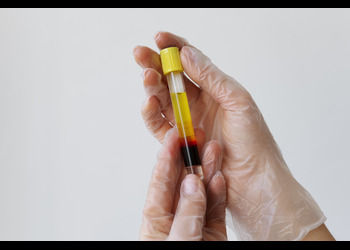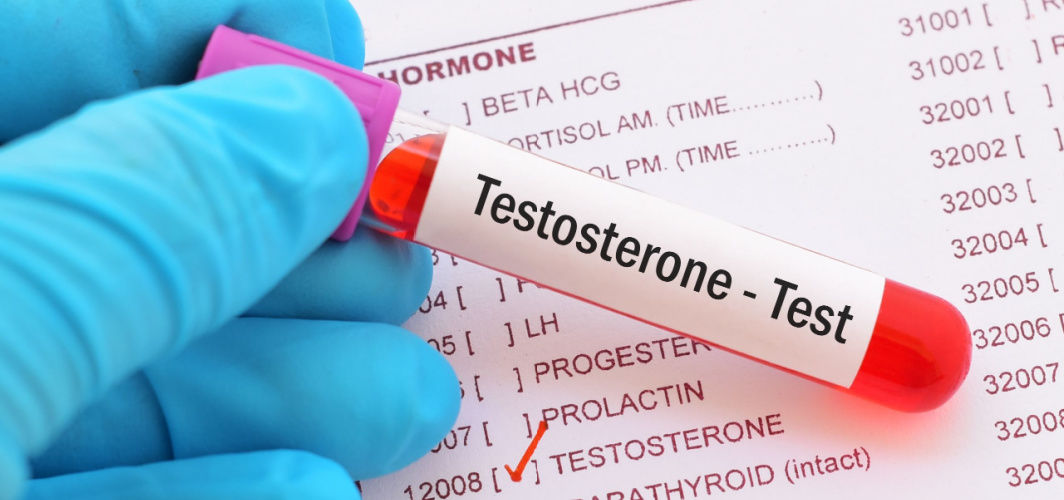General Health
What is Bilirubin?: Know Normal Ranges and Health Implications
8 min read
By Apollo 24|7, Published on - 02 January 2025, Updated on - 13 January 2025
Share this article
0
0 like

Bilirubin is a yellow pigment that your body produces when it breaks down old red blood cells. Once created, bilirubin travels to the liver, where it is processed and then excreted through stool and urine. When red blood cells (that also contain haemoglobin), which live for about 120 days, die, they are broken down in the spleen and liver. The heme (which provides a red colour) in haemoglobin further breaks down to produce bilirubin. This cycle is essential for your body’s waste management and overall health.
Types of Bilirubin
Bilirubin helps your body eliminate old red blood cells. It’s also a key marker for doctors to assess how well your liver is functioning.
Bilirubin exists in two main forms:
1. Indirect(Unconjugated) Bilirubin: This type is initially formed when heme is broken down. It is not water-soluble and travels in the bloodstream to the liver, where it undergoes further processing.
2. Direct (Conjugated) Bilirubin: In the liver, unconjugated bilirubin converts into a water-soluble form by attaching itself to a sugar molecule (glucuronic acid). This makes it easier to excrete from the body via stool and urine.
Understanding Bilirubin levels
Monitoring bilirubin levels is crucial for assessing liver function and diagnosing certain medical conditions.
1. Bilirubin Levels Chart
Bilirubin levels are typically measured through blood tests. Here’s a breakdown of normal bilirubin levels for both adults and newborns:
For Newborns, bilirubin levels can be higher than in adults due to their immature liver, which may not process bilirubin as efficiently. Normal bilirubin levels in newborns are as follows:
Neonatal jaundice is common in newborns and is characterised by elevated bilirubin levels. Although this condition typically resolves on its own, it is crucial to monitor it closely to avoid complications.
2. Factors Affecting Bilirubin Normal Ranges
Bilirubin levels in the body can be influenced by various factors, including:
- Liver Function: Liver diseases such as hepatitis, cirrhosis, and liver cancer can impair the liver's ability to process and excrete bilirubin, leading to elevated levels.
- Bile Duct Obstruction: Blockages in the bile ducts, often due to gallstones or tumours, can prevent bilirubin from being excreted, increasing its levels in the blood.
- Haemolytic Anaemia: Conditions that cause increased breakdown of red blood cells can raise unconjugated bilirubin levels. This includes haemolytic anaemia and genetic disorders like sickle cell anaemia.
- Newborn Jaundice: Newborns often have higher bilirubin levels due to immature liver function, which can lead to neonatal jaundice.
- Genetic Disorders: Conditions like Gilbert’s syndrome and Crigler-Najjar syndrome can affect bilirubin processing and lead to elevated levels.
- Lifestyle and Diet: Excessive alcohol consumption and poor dietary habits can impact liver health and bilirubin levels.
- Medications and Toxins: Certain drugs and environmental toxins can impair liver function, affecting bilirubin metabolism.
Why Monitor Bilirubin?
Monitoring bilirubin levels is important for understanding your liver health. Since bilirubin is processed by the liver, high or abnormal levels can suggest liver dysfunctions, bile duct issues, or too many red blood cells being broken down.
Critical symptoms and scenarios that necessitate bilirubin testing include:
- Jaundice (yellowing of the skin or eyes)
- Dark urine or light-coloured stools
- Abdominal pain, especially in the upper right side
- Liver disease (e.g., cirrhosis, fatty liver)
- Hepatitis or other liver infections
- Gallbladder issues (e.g., gallstones)
- Medications affecting liver function
- Conditions impacting red blood cells (e.g., anaemia or haemolysis)
Health Implications of Abnormal Bilirubin Levels
If your bilirubin levels are high or low, it’s important to consult a healthcare provider to determine the underlying cause and begin appropriate treatment.
1. High Bilirubin Levels and What They Indicate
High bilirubin levels can suggest several health issues, particularly related to liver function. When the liver can’t process bilirubin properly, it can accumulate in the blood, leading to jaundice (yellowing of the skin and eyes). High bilirubin levels may indicate:
- Liver Disease: Conditions like hepatitis, cirrhosis, or liver cancer can impair the liver’s ability to process bilirubin.
- Bile Duct Obstruction: Blockages in the bile ducts prevent bilirubin from being excreted, causing its levels to rise.
- Haemolysis (Increased Red Blood Cell Breakdown): Conditions like anaemia or blood disorders can cause more red blood cells to break down, leading to higher bilirubin production.
2. Low Bilirubin Levels: What Do They Mean?
While high bilirubin levels are more common, low levels can also have health implications. However, low bilirubin levels are generally less concerning. In some cases, low bilirubin levels may suggest:
- Reduced Red Blood Cell Turnover: A low bilirubin level may indicate insufficient breakdown of red blood cells, which could point to conditions like anaemia.
- Overactive Liver Function: Rarely, low bilirubin levels may occur when the liver processes bilirubin too quickly, often due to certain medications or liver conditions.
Diagnosing and Testing Bilirubin Levels
Bilirubin tests are blood tests usually performed in a healthcare laboratory. Here’s how the procedure works:
- Blood Sample Collection: A healthcare professional will draw a small blood sample from a vein in your arm using a needle. This process is quick and usually causes minimal discomfort.
- Lab Analysis: The blood sample is sent to a laboratory, where specialised equipment measures total, direct, and indirect bilirubin levels.
- Results: Results are generally available within a few hours to a day. Elevated or reduced bilirubin levels may prompt further tests or treatments, depending on the underlying cause.
Bilirubin tests are quick, minimally invasive, and provide critical insights into liver health.
Common Conditions Linked to Bilirubin Imbalance
Bilirubin imbalances can indicate various underlying health conditions. Understanding these conditions enables early detection and effective management.
1. Jaundice: Types and Causes
Jaundice is a condition characterised by yellowing of the skin and eyes, resulting from high bilirubin levels in the blood. It can be classified into three main types:
- Pre-hepatic (Haemolytic) Jaundice: Caused by excessive breakdown of red blood cells before bilirubin reaches the liver. Common causes: Haemolytic anaemia, sickle cell disease, and infections.
- Hepatic (Liver) Jaundice: Caused by liver dysfunction that prevents effective bilirubin processing. Common causes: Hepatitis (viral, autoimmune, or alcoholic), cirrhosis, and liver cancer.
- Post-hepatic (Obstructive) Jaundice: Results from a blockage in the bile ducts, preventing bilirubin excretion. Common causes: Gallstones, bile duct tumours, and pancreatic cancer.
Each type requires specific diagnostic tests and treatments, making it essential to identify the root cause accurately.
2. Liver Diseases and Their Relation to Bilirubin
Liver diseases play a significant role in disrupting bilirubin metabolism. Some common liver conditions include:
- Hepatitis: Liver inflammation caused by viral infections (hepatitis A, B, C) or alcohol abuse. It impairs the liver's ability to process bilirubin, leading to elevated levels.
- Cirrhosis: A chronic condition in which scar tissue replaces normal liver tissue, impairing liver function. It often results from alcohol abuse, chronic hepatitis, or fatty liver disease.
- Liver Cancer: Tumors in the liver can obstruct bile flow and impair function, causing bilirubin buildup and jaundice.
- Gilbert’s Syndrome: A common genetic condition where reduced enzyme activity leads to inefficient bilirubin processing, often resulting in mild jaundice during stress or fasting.
- Fatty Liver Disease: Excess fat in the liver, often linked to obesity, diabetes, and high cholesterol, can interfere with bilirubin metabolism.
Monitoring bilirubin levels is crucial for early diagnosis and management of liver conditions. Regular check-ups and a healthy lifestyle can help maintain liver function and prevent complications.
Managing and Treating Abnormal Bilirubin Levels
Abnormal bilirubin levels can indicate underlying liver or blood-related conditions, requiring a combination of lifestyle changes and medical interventions to restore balance and maintain liver health.
1. Lifestyle Changes and Diet
Managing abnormal bilirubin levels often begins with lifestyle modifications and dietary adjustments:
- Healthy Diet: Incorporate a balanced diet rich in fruits, vegetables, whole grains, and lean proteins. Fibre-rich foods support liver function, while antioxidant-rich foods like berries, nuts, and leafy greens help reduce oxidative stress.
- Hydration: Drinking plenty of water supports liver detoxification and helps maintain normal bilirubin levels.
- Limit Alcohol: Alcohol damages liver cells and impairs bilirubin processing. Avoiding or reducing alcohol intake significantly benefits liver health.
- Regular Exercise: Physical activity helps maintain a healthy weight, reduces liver fat, and improves overall liver function. Aim for 30 minutes of moderate exercise most days.
- Avoid Processed Foods: Limit high-fat and processed foods that can contribute to liver damage. Opt for whole, unprocessed foods whenever possible.
- Minimise Toxin Exposure: Avoid smoking and harmful chemicals that stress the liver.
2. Medical Treatments and Interventions
If lifestyle changes are insufficient, medical treatments may be necessary:
- Medications: Treat underlying conditions, such as:
- Antiviral medication for hepatitis.
- Immunosuppressants for autoimmune liver disease.
- Drugs to manage haemolytic anaemia.
- Phototherapy: A common treatment for neonatal jaundice, where special blue light breaks down excess bilirubin in infants.
- Bile Duct Procedures: Blocked bile ducts may require procedures like ERCP (endoscopic retrograde cholangiopancreatography) to remove obstructions.
- Liver Transplant: In severe liver disease or failure, a liver transplant may restore normal bilirubin processing.
- Ongoing Monitoring: Regular blood tests and check-ups help monitor bilirubin levels and adjust treatments as needed.
Conclusion
Regularly monitoring your bilirubin levels is essential for maintaining good health and preventing potential liver-related issues. One can significantly reduce the risk of complications associated with abnormal bilirubin levels by adopting a healthy lifestyle, including a balanced diet, regular physical activity, and scheduling routine medical check-ups.
Take charge of your health with regular screenings and bilirubin tests.
General Health
Leave Comment
Recommended for you

General Health
How To Prevent Sunstroke During A Heatwave?
Heatwaves can cause your body to dehydrate. In extreme cases, it can also lead to heat or sunstroke. Hence, you must remain indoors during a heatwave to stay cool. Drink plenty of fluids and if needed take frequent showers to stay comfortable during the heat.

General Health
How To Check Testosterone Levels?
Monitoring testosterone levels is essential for maintaining optimal health. Understanding the significance of testosterone, the testing methods available, recognising signs of low levels, and knowing when to get tested is key to addressing any hormonal imbalances effectively.

General Health
No Time For A Workout? Try This 10-Min Full Body Exercise
A simple 10-minute full-body exercise works all your major muscles and elevates your heart rate. It boosts your brain function and helps you burn calories more effectively. It does not require any equipment and can be done at home.
Subscribe
Sign up for our free Health Library Daily Newsletter
Get doctor-approved health tips, news, and more.
Visual Stories

Could There Be More to Your Snore?
Tap to continue exploring
Recommended for you

General Health
How To Prevent Sunstroke During A Heatwave?
Heatwaves can cause your body to dehydrate. In extreme cases, it can also lead to heat or sunstroke. Hence, you must remain indoors during a heatwave to stay cool. Drink plenty of fluids and if needed take frequent showers to stay comfortable during the heat.

General Health
How To Check Testosterone Levels?
Monitoring testosterone levels is essential for maintaining optimal health. Understanding the significance of testosterone, the testing methods available, recognising signs of low levels, and knowing when to get tested is key to addressing any hormonal imbalances effectively.

General Health
No Time For A Workout? Try This 10-Min Full Body Exercise
A simple 10-minute full-body exercise works all your major muscles and elevates your heart rate. It boosts your brain function and helps you burn calories more effectively. It does not require any equipment and can be done at home.